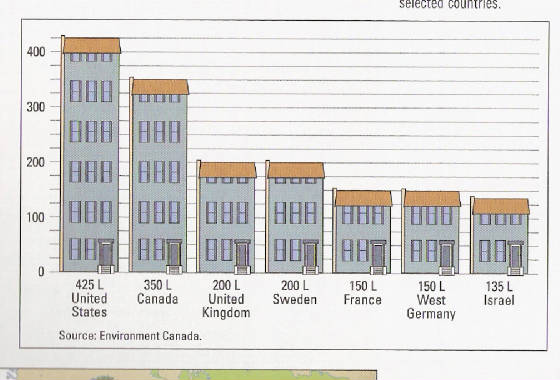|
Global resources can be as easy as basic needs. Like food, clothing, shelter, leisure and cultural activities.
What is a Resource?
A resource is anything that is useful to humans. It helps us establish a goal to keep business and people going. There are
three basic types of resources.
Natural Resources - which are materials that can be found in nature
and oppressed to make a profit. There are also two types of Natural Resources. Renewable Resources - Which are any
resources that can replace itself within a relatively short period of time. And then there are Non-Renewable Resources
- Which are resources that have taken millions of years to be produced and yet we consume them everyday.
Capital Resources
These are resources that "a society uses to further the creation of wealth." It includes printed money, machinery, factories
and other kinds of buildings and equipment.
Human Resources - Determines a nation's strength, and that of the people who live there.
Distribution of Global Resources
All three types of resources share the same trait, and that's uneven distribution. Some country's have more than others. Like
clean drinking water or enough food for everyone. The causes for uneven distribution of resources are physiography, climate,
and geological history.
Land Resources
Factors that can contribute to the uneven distribution in agriculture are climate, relief, geology, and human settlement.
Water Resources
Between 3 and 5 million people die each year because of unsafe water and bad sanitation. In Canada alone, each person uses
an average of 350 litres of water a day. In Europe they use an average of 165 litres a day, and in African countries they
use only 3 litres a day. Uneven distribution in water is because parts of the world have little to no rainfall in a year,
others get too much.

|
| Average Daily Water Use |
Food as a Resource
Food is one of the more important resources in life. You need it in order to survive. We need enough land to feed almost 6
billion people. An estimated 60 million people starve each year, and nearly 800 million others, 200 of them being children,
suffer from malnutrition.
Human Factors Affecting Food Resources
War, because where there's war, you are unable to grow food. There is debt. If you have little to no money, you are unable
to purchase foods to survive. Recently, food has gone up in price, sending the less developed countries and the poor further
back. Technology is another factor. If you don't have the technology to crop your food as fast as it grows, you will lose
it because of the heat, and unfertile soils. With the Green Revolution and Genetically Modified Foods your crops grow twice
as fast as they normally would, leaving farmers little time to harvest.
Aquaculture
Defined as "the growing and harvesting of aquatic plants and animals for human consumption. Altough it is good to have, Aquaculture
can cause some problems. Water pollution, fish feces are dumped back into the water, contaminating the breeding areas, and
killing the algae. Wetlands loss, when these lands were drained and turned into fish farms, there is a loss of habitat, and
animals. and mangrove destruction, when they were removed, the coastal environments are ruined through increased soil erosion,
flooding, habitat loss, and salinization ("the accumulation of salts in topsoil to such an extent that the soil is made unproductive")
of farm soils.
|

